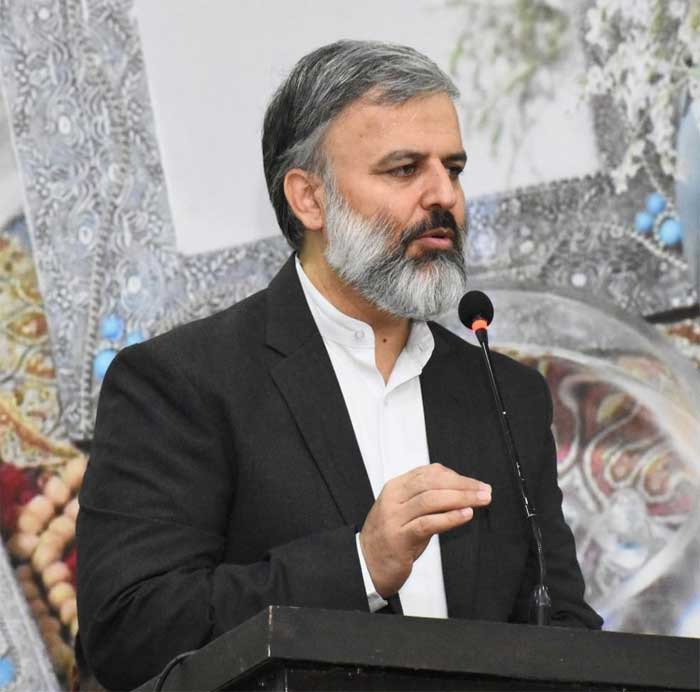
Fatima bint Musa (SA), renowned as Fatima al-Ma’suma, holds a significant and esteemed position in Islamic history, particularly within the context of Twelver Shia Islam. Born around 790 CE in the sacred city of Medina, she is the daughter of Musa al-Kazim, the seventh Imam, and the sister of Imam Ali al-Reza, the eighth Imam, who succeeded their father. Her life unfolds as a narrative of piety, devotion, and a journey that would later establish a revered pilgrimage site. Fatima (Masooma-e-Qom) is also shthe younger sister of Khadija bint Musa (AS) known as Bibi Maham, Masooma-e-Sindh.
In the year 816 CE, Fatima (SA) embarked on a pilgrimage from her hometown of Medina to visit her brother Ali Reza (AS) in the city of Merv. This pilgrimage, rooted in familial love, also served as a testament to her profound spiritual commitment. Unfortunately, the journey took a tragic turn as Fatima (SA) fell seriously ill along the way. Despite the fervor with which she began her pilgrimage, it became evident that this spiritual odyssey would be her final one.
It was in the city of Qom, located in present-day Iran, that Fatima al-Ma’suma (SA) breathed her last. Qom, renowned for its rich Islamic heritage, became the final resting place for this esteemed woman. Over time, the site of her shrine in Qom has evolved into one of the most significant pilgrimage destinations for Shia Muslims, symbolizing not only Fatima’s devoutness but also serving as a spiritual sanctuary for those seeking solace and connection with the divine.
The pilgrimage to the shrine of Fatima al-Ma’suma (SA) in Qom is characterized by profound rituals, prayers, and a deep sense of reverence. Pilgrims from various corners of the world make the journey to Qom to pay homage to this revered figure, seeking blessings and spiritual enlightenment. Moreover, the shrine has become a hub for religious scholarship and learning, attracting theologians and students drawn to the profound legacy of Fatima al-Ma’suma (SA).
Beyond the physical structure of the shrine, Fatima al-Ma’suma’s (SA) legacy endures through the teachings of the Imams and the spiritual values she embodied. Her life serves as an exemplar of compassion, humility, and unwavering faith. The annual commemoration of her passing becomes a time for reflection and renewed dedication to the principles she lived by.
The life of Fatima (SA) bint Musa (AS), known as Fatima al-Ma’suma, stands as a testament to the enduring spiritual legacy of the Ahl al-Bayt in Shia Islam. Despite her pilgrimage being cut short by illness, it has left an indelible mark on the city of Qom and the hearts of believers who continue to be inspired by her example. The shrine stands as a living tribute to her memory, inviting pilgrims to connect with the essence of devotion and spirituality that defined Fatima al-Ma’suma’s (SA) remarkable life.
After Imam Musa Kazim (AS) death in 799 CE, potentially due to poisoning in the prison of the Abbasid caliph Harun al-Rashid, his followers recognized Imam Ali al-Reza (AS) as his successor. In 816 CE, Imam Ali Reza (AS) was summoned to Khorasan by the Abbasid caliph al-Ma’mun, who appointed him as the heir apparent in 817 CE. Fatima (SA) set out to join her brother but fell ill in the town of Saveh. Requesting to be taken to the nearby town of Qom, she succumbed to her illness a few days later. Various accounts suggest that a local Shia figure named Musa ibn Khazraj al-Ash’ari played a role in bringing Fatima to Qom. While reports of poisoning exist, they are not documented in Tarikh-e Qom, a historical account of Qom from 988 CE by Hasan ibn Muhammad Qomi. Fatima (SA) passed away in 816 or 817 CE, her exact age at the time uncertain.
Known Masooma-e-Qom or as al-Ma’suma (SA), meaning ‘the immaculate, the infallible,’ Fatima received this title in a decree issued by Jahan Shah, the fifteenth-century king of Iran. Revered in Twelver Shia as the embodiment of feminine virtues, Fatima is celebrated for her piety, religious scholarship, and is often likened to Fatima bint Muhammad (SA), the daughter of the Islamic prophet Muhammad. Twelvers honor her as a saint believed to intercede on Judgement Day and perform miracles, including the healing of incurable diseases.
Fatima was laid to rest outside Qom in a plot of land owned by Musa al-Ash’ari, later transformed into a public endowment. The house where she resided, along with the site of her prayers, evolved into a mosque. Over the centuries, her shrine underwent development, supported by rulers such as the Buyids, Seljuks, Qara Qoyunlus, and Aq Qoyunlus. The present complex largely dates back to the Safavid and Qajar eras.
Qom owes its prominence as a pilgrimage destination to the shrine of Fatima al-Ma’suma (SA). Pilgrimage to her shrine is endorsed in traditions attributed to her brother al-Rida and his son Muhammad al-Jawad, the ninth Imam in Twelver Shia. This elevated Qom into a significant center for Shia activity and learning from the eighth century onwards, reaching its zenith in the tenth century before being destroyed in 1224 during the first Mongol invasion of Persia. Despite this setback, Qom experienced a revival during the Safavid period, particularly through the efforts of Shah Begum and later supported by Abbas I, who established a school and pilgrim hospice. The theological law school, Feyziyya, founded in 1533, and subsequent developments during the Qajar era further solidified Qom’s status. The arrival of figures like Abdolkarim Haeri Yazdi in 1921 marked another phase of growth, culminating in the foundation of the present theological center, hawza-ye elmiyye, with notable students such as Ruhollah Khomeini, who led the Iranian revolution in 1979.



